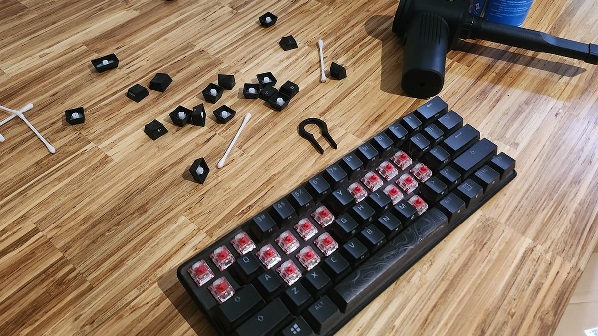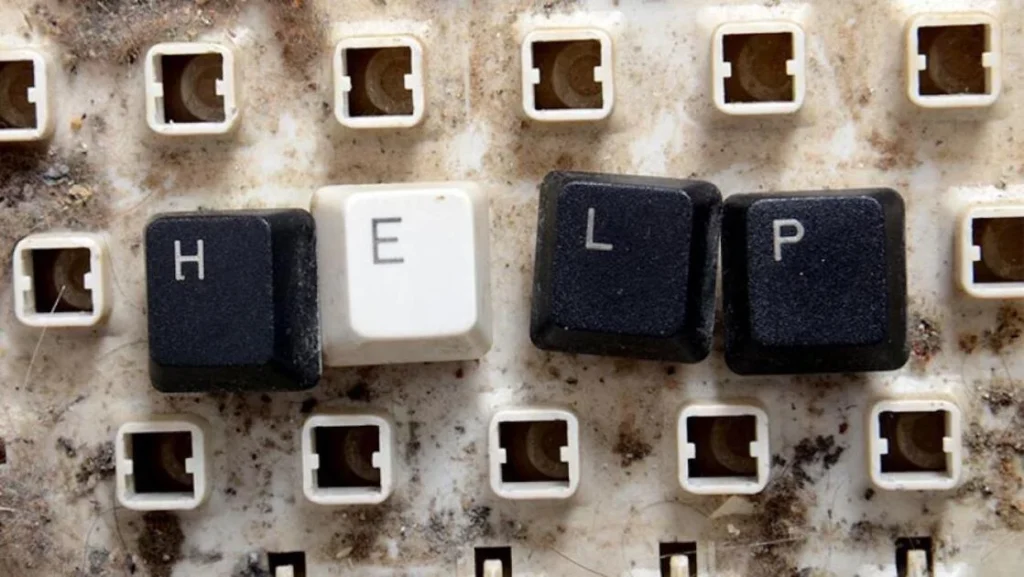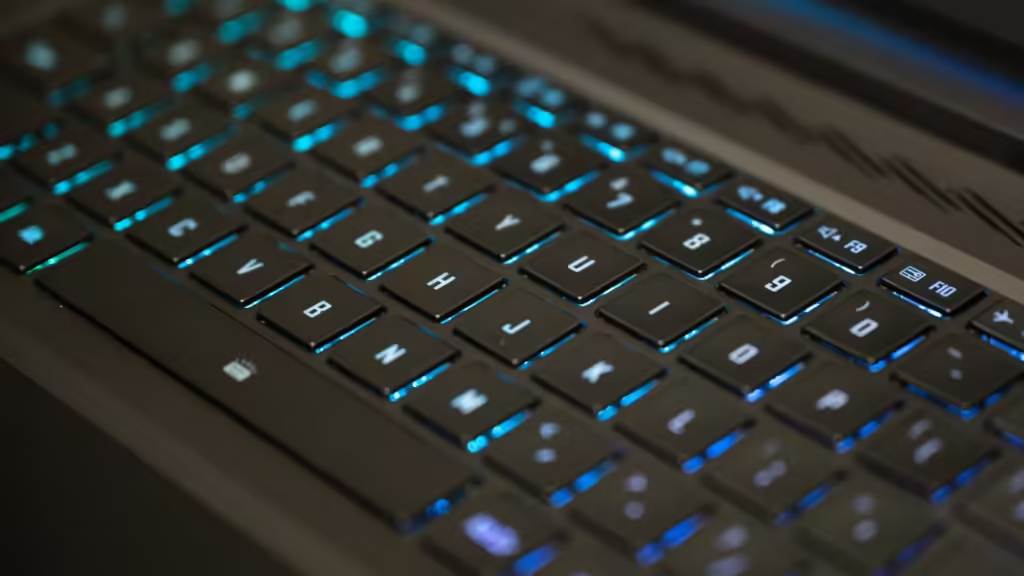Nothing disrupts productivity like a sticky keyboard key that won’t cooperate. Whether you’re typing an urgent email, gaming, or simply browsing, a stubborn key can be a frustrating roadblock. But don’t worry—learning how to stop a keyboard key from sticking starts with understanding the common causes of sticky keys and knowing how to prevent and fix them. This guide provides simple troubleshooting steps, effective prevention tips, and expert cleaning techniques to restore your keyboard—no tech expertise needed!
How to Fix Sticky Keyboard Keys: Causes, Prevention & Step-by-Step Guide

How to Fix Sticky Keyboard Keys
Diagnosing the Issue
Before diving into solutions, let’s figure out if the problem is mechanical or software-related. First, try plugging in an external USB keyboard. If the issue persists, it’s most likely a software or system-related problem. If the external keyboard works fine, then your built-in keyboard is faulty.
Another quick test is checking whether the key is stuck physically. Sometimes, debris like food particles, dust, or even dried liquid spills cause keys to stick. If pressing a key once results in multiple presses or if a key refuses to return to its original position, the cause might be something underneath the keycap.
Why Do Keyboard Keys Stick? (Top Causes & Easy Fixes)
A sticking key can be caused by several factors, including:
✅ Dirt and Debris Accumulation: Dust, food crumbs, and other particles can collect under the keys, causing them to stick.
✅ Liquid Spills: Even a small amount of liquid can create a sticky residue or corrode internal components.
✅ Wear and Tear: Prolonged use can wear down key switches, making them less responsive.
✅ Software Issues: Sometimes, the problem isn’t physical—outdated drivers or software glitches can also cause key malfunctions.
Understanding the root cause helps determine the best fix. Let’s explore how to prevent and resolve these issues.

Proven Tips to Prevent Sticking Keys
✅ Regular Cleaning: Use a can of compressed air weekly and wipe your keyboard with a microfiber cloth.
✅ Avoid Eating or Drinking Near Your Keyboard: Spills and crumbs are major culprits of sticky keys.
✅ Use a Keyboard Cover: Protect against dust, debris, and accidental spills.
✅ Handle Keys Gently: Avoid excessive force when typing to prolong key lifespan.
✅ Update Your Software & Drivers: Ensure your keyboard functions optimally by keeping your system up to date.
Step-by-Step Guide: How to Fix a Sticky Keyboard Key Easily
Materials You’ll Need:
✔️ Compressed air
✔️ Soft brush or microfiber cloth
✔️ Isopropyl alcohol (at least 70%)
✔️ Cotton swabs
✔️ Keycap puller (if applicable)
Step 1: Power Off & Unplug the Keyboard
Always turn off your device and unplug the keyboard before cleaning to prevent damage.
Step 2: Remove Loose Debris
Use compressed air to blow away dust and crumbs from between the keys.
Step 3: Clean Around Sticky Keys
Dampen a cotton swab with isopropyl alcohol and gently clean around the edges of the affected keys.
Step 4: Remove and Deep Clean Keycaps
If keys are still sticking, carefully remove them using a keycap puller. Wipe the exposed area with a microfiber cloth dampened with alcohol.
Step 5: Let It Dry & Reassemble
Allow the keyboard to dry completely before reattaching keycaps and reconnecting the device.

Software Fixes for Keyboard Issues
If the problem is not physical, software glitches or outdated drivers could be the culprit. Here’s how to address it:
Uninstall and Reinstall Keyboard Drivers
- Press Windows Key + X, then go to Device Manager.
- Locate Keyboard drivers, right-click, and select Uninstall.
- Restart your computer; the driver will be automatically installed.
Update Windows
- Press Windows Key + X, click Settings, and navigate to Windows Update.
- Check for updates and install them to optimize your system.
Perform a System Restore
If the issue started recently, restoring your system to a previous working state may help:
- Press Windows Key + R and type rstrui.exe.
- Follow the on-screen instructions to select a restore point.
- Click Next, select the desired restore date, and hit Finish.
- Your system will restart and begin the restore process, which might take several minutes.
Preventing Future Sticky Keys
To avoid future issues, consider these best practices:
✔️ Cover your keyboard while eating or drinking to prevent food particles and liquid spills.
✔️ Regularly clean your keyboard with compressed air and a microfiber cloth.
✔️ If using a laptop, occasionally remove keycaps (if possible) and clean the underlying switches.
✔️ Invest in a high-quality keyboard, as cheaper models tend to wear out faster.
If none of the solutions above resolve the issue, your keyboard may be nearing the end of its lifespan. Cheap laptop keyboards, especially, can wear out quickly. If you’re not comfortable replacing it yourself, consider having a professional look at it. Some laptop models, such as newer MacBooks, make keyboard replacement nearly impossible without manufacturer assistance.
Best Practices to Keep Your Keyboard in Top Condition
✅ Use a Keyboard Cover: Protect against spills and dust.
✅ Keep Your Workspace Clean: Reduce debris that can accumulate under the keys.
✅ Invest in a High-Quality Keyboard: Mechanical keyboards are more durable and less prone to sticking.
✅ Update Drivers & Firmware: Optimize performance by keeping software up to date.
People Also Asked
How often should I clean my keyboard?
At least once a month. If you eat at your desk, consider cleaning it weekly.
Is compressed air safe for keyboards?
Yes! Use short bursts and hold the can upright to avoid moisture buildup.
Can I use alcohol to clean my keyboard?
Yes, but use isopropyl alcohol (70% or higher) sparingly with a cotton swab.
What should I do if my keyboard keys are still sticky after cleaning?
Try deeper cleaning by removing keycaps. If the issue persists, it might require professional repair.
What keyboards are less prone to sticking?
Mechanical keyboards are generally more durable and easier to clean than membrane keyboards.
How often should I clean my Keyboard?
It’s generally recommended to clean your keyboard at least once a month to prevent the buildup of dirt and debris. However, if you use your keyboard frequently or in a dusty environment, more frequent cleaning may be necessary.
Is it safe to use Compressed Air to clean my Keyboard?
Yes, using compressed air is a safe and effective way to remove dust and debris from your keyboard. However, make sure to hold the can upright and use short bursts of air to avoid damaging the keyboard’s internal components.
Can I use Alcohol or other Cleaning agents on my Keyboard?
Isopropyl alcohol is safe to use on most keyboards, but it’s essential to use it sparingly and avoid getting liquid directly onto the keys or circuitry. Avoid using harsh cleaning agents or solvents, as they can damage the keyboard’s finish or components.
What should I do if my Keyboard keys are still Sticking after Cleaning?
If basic cleaning methods fail to resolve the issue, you may need to disassemble the keyboard for a more thorough cleaning or seek professional assistance to diagnose and repair any underlying problems.
Are there Specific Keyboards known for being less prone to Sticking Keys?
While no keyboard is entirely immune to sticking keys, mechanical keyboards are generally less prone to this issue due to their robust construction and individual key switches. However, it’s essential to choose a keyboard that suits your typing preferences and usage habits.
For detailed guidance, refer to reputable sources like azcentral and Lifewire.

